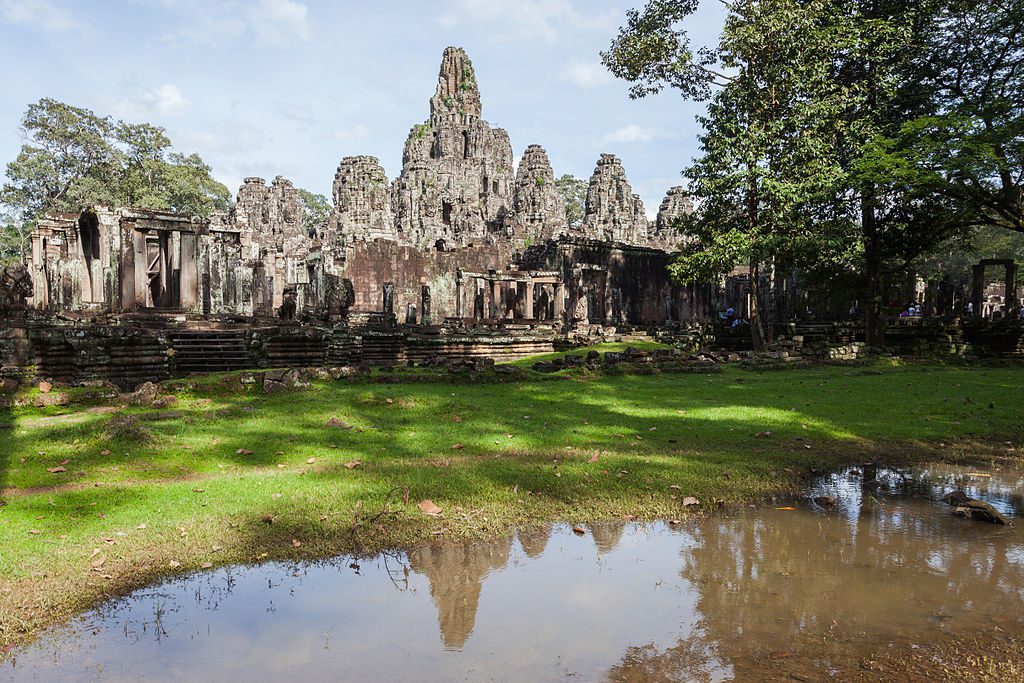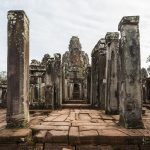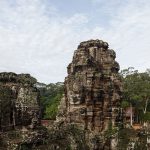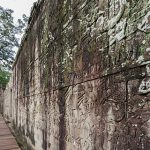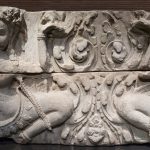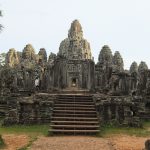At the heart of Angkor Thom is the 12th-century Bayon, the mesmerising if slightly mind-bending state temple of Jayavarman VII. It epitomises the creative genius and inflated ego of Cambodia‚s most celebrated king. Its 54 Gothic towers are decorated with 216 gargantuan smiling faces of Avalokiteshvara, and it is adorned with 1.2km of extraordinary bas-reliefs incorporating more than 11,000 figures.
The temple’s eastward orientation leads most people to visit early in the morning. However, Bayon looks equally good in the late afternoon.
The famous carvings on the outer wall of the first level show vivid scenes of everyday life in 12th-century Cambodia, while the bas-reliefs on the second level do not have the epic proportions of those on the first level and tend to be fragmented.
Moving in a clockwise direction from just south of the east gate you’ll encounter your first bas-relief, Chams on the Run, a three-level panorama. On the first tier, Khmer soldiers march off to battle ‚ check out the elephants and the oxcarts, which are almost exactly like those still used in Cambodia today. The second tier depicts coffins being carried back from the battlefield. In the centre of the third tier, Jayavarman VII, shaded by parasols, is shown on horseback followed by legions of concubines (to the left).
Moving on, the first panel north of the southeastern corner, showsHindus praying to a linga (phallic symbol). This image was probably originally a Buddha, later modified by a Hindu king.
The Naval Battle panel has some of the best-carved reliefs. The scenes depict a naval battle between the Khmers and the Chams (the latter with head coverings), and everyday life around Tonl Sap lake, where the battle was fought. Look for images of people picking lice from each other‚s hair, of hunters and, towards the western end of the panel, a woman giving birth.
In the Chams Vanquished, scenes from daily life are featured while the battle between the Khmers and the Chams takes place on the shore of Tonl Sap lake, where the Chams are soundly thrashed. Scenes include two people playing chess, a cockfight and women selling fish in the market. The scenes of meals being prepared and served are in celebration of the Khmer victory.
The most western relief of the south gallery, depicting a military procession, is unfinished, as is the panel showing elephants being led down from the mountains. Brahmans have been chased up two trees by tigers.

